The Paspaleys on their lifelong love affair with pearls
The third generation of the Paspaley dynasty, Australia’s premier family-owned luxury firm - steered by creative director Christine Salter - is taking the business to the next level.

Pearling is business, pearling is family, pearling is life. For the Paspaley dynasty, there is no distinction between the industry, their loved ones, their childhood and lives as adults. The threads of their own identities are intertwined with the memories, the adventures and the pearls themselves.
For Nick Paspaley, the 75-year-old patriarch of the family, it is the recollection of his father Nicholas Paspaley in pearling master whites – short-sleeved white shirt, white shorts, long white socks, white shoes with white shoelaces – in Darwin in the 1950s as he looked out over the harbour to gauge how rough the seas were as there was no communication with his pearling luggers. This was the only way Paspaley could find out how the shell catch was going.
This story appears in the July issue of WISH, out on Friday, July 7 with The Australian
For Christine Salter, Nick’s granddaughter and creative director of Paspaley, it is driving for hours as a child across the remote bushland to reach their pearl farm on the Kimberley coast in Western Australia, getting bogged along the way. They would flash the torch in total darkness across the sea to let staff on the pearl farm know they had arrived and someone would pick them up by boat.
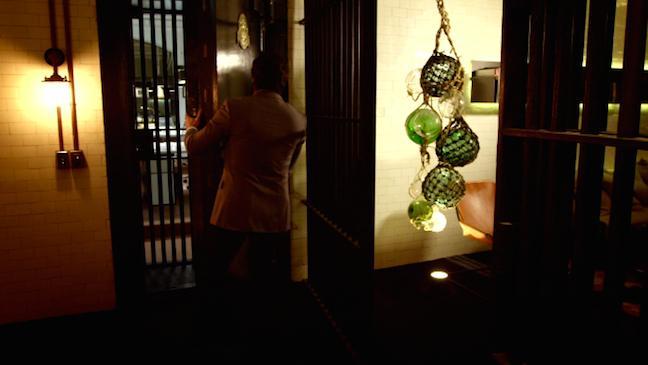
And for Chris Paspaley, Salter’s cousin, who heads the jewellery merchandising side of the business, it is the memory of sitting on the floor of the pearl room in Darwin as a boy and his mother Marilynne placing some pearls down for him to play with. Or the sounds of her pearl charm bracelets made when she jingled them as a way of attracting attention from her children at the dinner table.
“I don’t think it is possible to identify my first memory of pearls as it is like asking what the first memory of your family was, it has just always been there,” Salter says. “Pearling is in my family, pearling is the way we live and it’s what we do. Our parents don’t come home at the end of their day and that’s their job done. It’s something that is being constantly thought about and spoken about.”
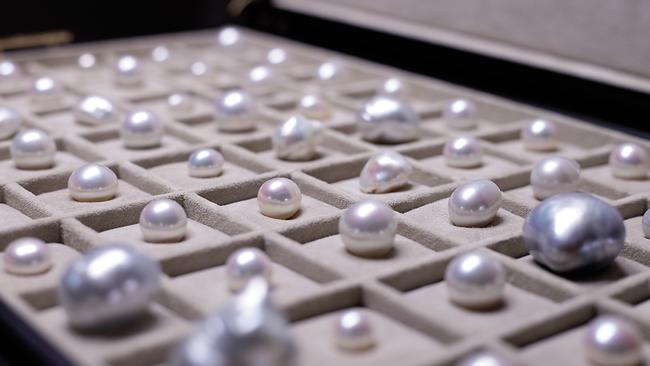
The third generation of the Paspaley dynasty – Australia’s premier family-owned business in the world of luxury when Europe has Hermès, Prada, the Pinaults of Kering and LVMH’s Arnaults just to name a few – is taking the company to the next level, building on what the generations before achieved and acquired and creatively carving out a modern future for pearl jewellery.
All 10 members of the third generation of the family have worked or are working across all facets of the business, which may have started out with the pearling ships Nicholas Paspalis (he Anglicised his name to Paspaley after coming to Australia from the Greek island of Kastellorizo in 1919) sent out from Darwin but has since expanded to farming, wine, aviation, extensive property holdings and even a hotel in New York.
According to The Australian’s The List: Richest 250, the Paspaley family is worth $1.12 billion, has a total of 1200 employees and the pearling business makes up about 40 per cent of the Paspaley Group’s annual revenue. The company has more than $200 million worth of commercial buildings spread around the world – including its Sydney store and retail headquarters housed in the heritage-listed former Bank of Australasia building on Martin Place – as well as operating private planes (including search and rescue, air ambulance and the specialist amphibious aircraft called Mallards for pearling), ship engineering facilities and cattle and sheep farms. There is even a winery in Mudgee, regional New South Wales.
Nick Paspaley is executive chairman while his sisters Marilynne Paspaley and Roslynne Bracher are both company directors and shareholders. The women were responsible for developing the retail arm of the business (Roslynne in Darwin and Marilynne in Sydney) in the 1980s and it was the trio who also decided to invest in other areas such as property and agriculture to diversify the risk of the business.
James Paspaley, Nick’s son, is the executive director of Paspaley and oversees all operations. Peter and Michael Bracher, Roslynne’s children and Christine’s brothers, look after global wholesale operations. Marilynne’s son Nick Hanigan, also Chris’s brother, manages Paspaley’s extensive property portfolio, future development and recently opened The Wall Street Hotel in New York.
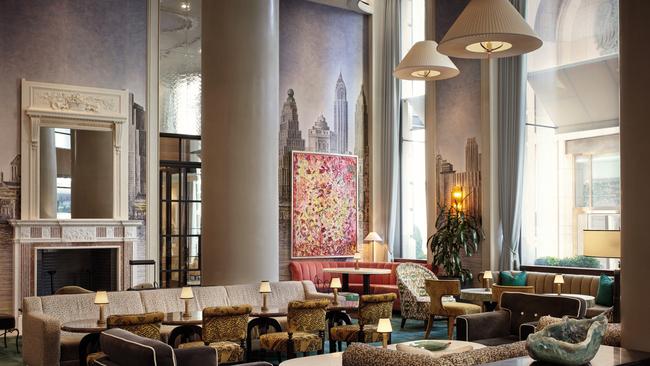
“There is something for everybody to suit all of our personalities,” explains Salter of her family company. “Because we are a fully integrated business from seabed to shop floor, whether you are interested in design or craftsmanship, or the pearling or the ships, or even the science behind it, the marine biology or even the marketing, it has enabled us to take on different roles that suit us.”
The family has given WISH a series of interviews, including one with the private Nick Paspaley, who still goes out with the pearl divers, that reveal a genuine passion for what they do and how it has been passed down through three generations. And it begins with the pearl itself.
“Pearls were such a dominant feature in my parents’ lives, it sort of became natural for me as a child to assume that pearls were something of great significance,” Nick Paspaley says of his upbringing in Darwin.
“Each individual pearl was treated as something important and I was allowed to hold them occasionally. When I held them in my hand, they were wonderful and magnificent. I knew I was holding something precious. I guess those feelings about pearls were contagious for a young boy. I carry those same feelings today as I did when my father was here.”
Nick started going out on the pearling luggers in 1969 at age 21 and within 12 months was running one of the vessels. His father had founded one of the first cultured pearl farms in the 1950s in the Northern Territory and later purchased farms in Kuri Bay, off the Kimberley coastline. Paspaley produced cultured Australian South Sea pearls and are still doing it to this day, but with much better processes and equipment. Nick and his father have both been recognised publicly with an Order of Australia and an MBE respectively for their innovation in the industry and systems to make it more sustainable, efficient and safe.
“What we do now is our dive fleet go to sea and they will first dive for a shell and that is managed by the government’s quota system,” explains Chris Paspaley. “So the divers will collect the shell off the seabed by hand, it will be operated on and then it will be taken to our farms where during the husbandry period of growing the pearl for two years, the shell is cleaned at regular intervals. The water there is so rich in nutrients that you get the perfect conditions for these shells to grow.”
The husbandry part of pearling – which has more in common with agriculture than gemstone mining – involves inserting a nucleus into the oyster and the pearl is created as a defence mechanism. Staff carefully take the shells out of the water every two months to clean them.
-
“Pearls are porous in nature. So they live off the oils of our skin. If you were to leave a pearl locked away, it would dry out”
-
“You see these divers and they’re these gruff guys working in the humid heat of the Territory on the back of these boats. They are in these singlets and they are moving and they’re lifting piles of heavy shells,” Chris Paspaley says. “And yet they suddenly move so slowly – almost in a distortion of time – as they come up to the shell that is in the tanks. They slow down to approach it with care and gentleness so they don’t stress the shell. There is an understanding that this is a living thing.”
That wonderment and sense of respect for the pearl as a living organism – something often lost on the consumer – is apparent when you speak to any family member. Chris Paspaley spent almost an hour at their Martin Place store explaining all things pearl and his enthusiasm is catching. He pulls out bag upon bag of pearls to show me the key to their beauty: the colour, the lustre, the shape including the perfect rounds, baroque and keshi pearls (beautiful but unusual shaped ones).
“Pearls are actually porous in nature,” he explains as he places them in my hand, a gold-hued one after a pink one, then silver, then white. “They’re a living gem. So they live off the oils of our skin. If you were to leave a pearl locked away in a vault in dry conditions, hot conditions, over time it would dry out. The natural oils of our skin are good for the pearl. I will let you play with them now.”
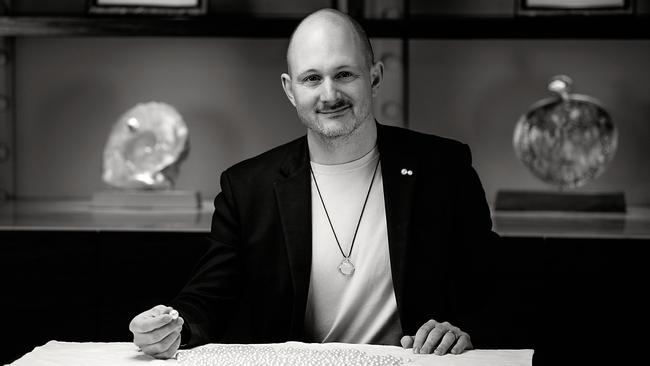
Later we go to the pearl room, tucked safely downstairs in the old bank vault and reached via one of Sydney’s oldest lifts, where technicians are grading the pearls and deciding where they go. There is also an extraordinary display of different pearls in a big box. “This is the family’s private collection,” he explains. “We are hoarders like any good Greek family should be. Every harvest the pearls come in and the family will go through them and we will keep a few that catch our eye.”
They all still get very excited about the pearls that are collected during the harvest season (the cycle is again similar to agriculture) at the more than 20 farms dotted along 2500km of rugged Kimberley coastline. “Last year Nick came off the harvest and flew into Sydney, he comes into the office, walks downstairs and over to me, carrying this green Woolworths bag,” Chris Paspaley recalls. “He pulls out this tray and says, ‘I found these pearls’ and there they are. There wasn’t just one either, he had all these amazing pearls that he found and came straight here to celebrate with everyone.”
The family at Paspaley goes beyond just the immediate members: there are staff who have worked at the company for decades. All the third-generation children involved in the business spent a year on the pearl luggers after they finished school and often established life-long friends with the crew. “When I was growing up, Mum never had a dinner party without people that worked for Paspaley at her table,” says Salter. “We were always having the work Christmas parties at my mum’s house, we were always going out to the boats, and almost everyone
I knew grew up in the pearling industry. It wasn’t until I was actually in Year 11 at boarding school in Sydney when a new girl started and she went, ‘What do you mean your family farms pearls? I don’t understand. What does that mean?’.”
Nick Paspaley had the same experience a few decades prior when he also went to boarding school in Sydney at just 11. “Pearling seemed to me to be quite a normal lifestyle at that age,” he recalls. “As I grew older, and after going to boarding school I realised that other kids’ families had businesses other than pearls. In fact, I was surprised that nobody else knew much about pearling and my dad’s business. I knew how important pearls were to my father’s life. They were his whole existence.”
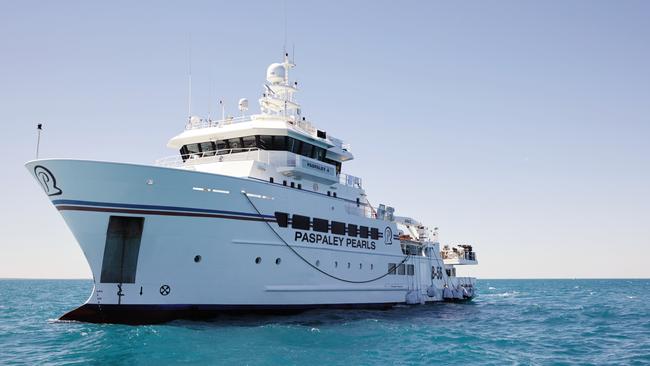
Despite the fact that there is three generations of the family now involved in the business, both Chris Paspaley and Christine Salter insist there was no outward pressure to follow into the world of pearling. Paspaley actually studied computer science at university and was sure he would go into that industry. It wasn’t until he had an interaction with a customer – when he was helping out with administration systems at a store during the festive season – and he realised that pearls were not just a token but much more.
“I was coming down the stairs into the store one Christmas time and this gentlemen burst in the door, saw I worked there, and grabbed my hand and shook it and said ‘I bought your pearls for my wife last year and she still hasn’t stopped smiling’,” he recalls. “There is just this hidden secret about these pearls, which is when clients wear them, they come back and say ‘They just light me up’.”
For Salter, there was never any conscious choice, going to work at Paspaley was just the logical next step in her life. “We love what we do, it is who we are. It was not joining the business, we were already in the business from a young age so it was just a natural progression,” she explains. “We all went off and did our studies but it often with the intention of returning. My cousins, my brothers and myself all began our career spending a year working on the ships. Again nothing was ever asked of us but we always somehow knew what we were going to do and we would return.”
-
“Pearling to me seemed quite a normal lifestyle. As I grew older I realised other kids’ families had businesses other than pearls”
-
The Paspaley creative director studied at the National Art School and the Design Centre Enmore, both in Sydney. She spent the first few years at the company working in marketing, events and client relations before designing her debut collection, Muse, in 2010. Salter is inspired by the contemporary woman and created relaxed, modern pieces of jewellery – featuring long necklaces for the first time – to impart the message that pearls could be worn at any age, with anything and at any time of day. She had noticed there was a gap in the market for this type of product.
The collection was a big success and Salter has since gone on to design many more – including high jewellery pieces – that are inspired by the pearl itself, the stunning landscape of the Kimberley region, the tattoos on the divers, and the flora and fauna on the remote coastline of northethe first time cameras have been allowed inside Paspaley‘s secret pearl room.rn Australia. She takes her design team up to the pearl farms every year to get ideas for future rings, bracelets and necklaces.
As to the challenges of working so closely with your extended family every day, Salter nominates the inability of her cousins and brothers to in fact stop talking about work. “We don’t switch off,” she says, laughing. “We are such close friends, we socialise together and we even go skiing together. But when we go out, when we catch up, guess what the topic of conversation is? Pearling.”
Chris Paspaley concurs. There are often emails at all hours and on weekends between family members as they get ideas for new pieces or ways to expand the business. Their passion is not contained to nine-to-five (except at Christmas where pearls are a no-go as gifts).
So what for the fourth generation? Salter says her kids are already showing interest and it seems the passion for pearling has already been passed down to the next branch of the family tree.
“My children have been to our pearl farms a lot of times and like when I grew up, they have not known anything different,” she explains. “They’ve formed very strong attachments to our pearl farmers out there. My daughter just wants to do what I do when she grows up and my son wants to be a musician first and then go to Paspaley afterwards. My son will come up to me … and describe this elaborate necklace using pearls. He’s a child thinking about how we can set these pearls into a new creation; he’s already thinking that, his brain is already ticking over, thinking about pearls.”




To join the conversation, please log in. Don't have an account? Register
Join the conversation, you are commenting as Logout